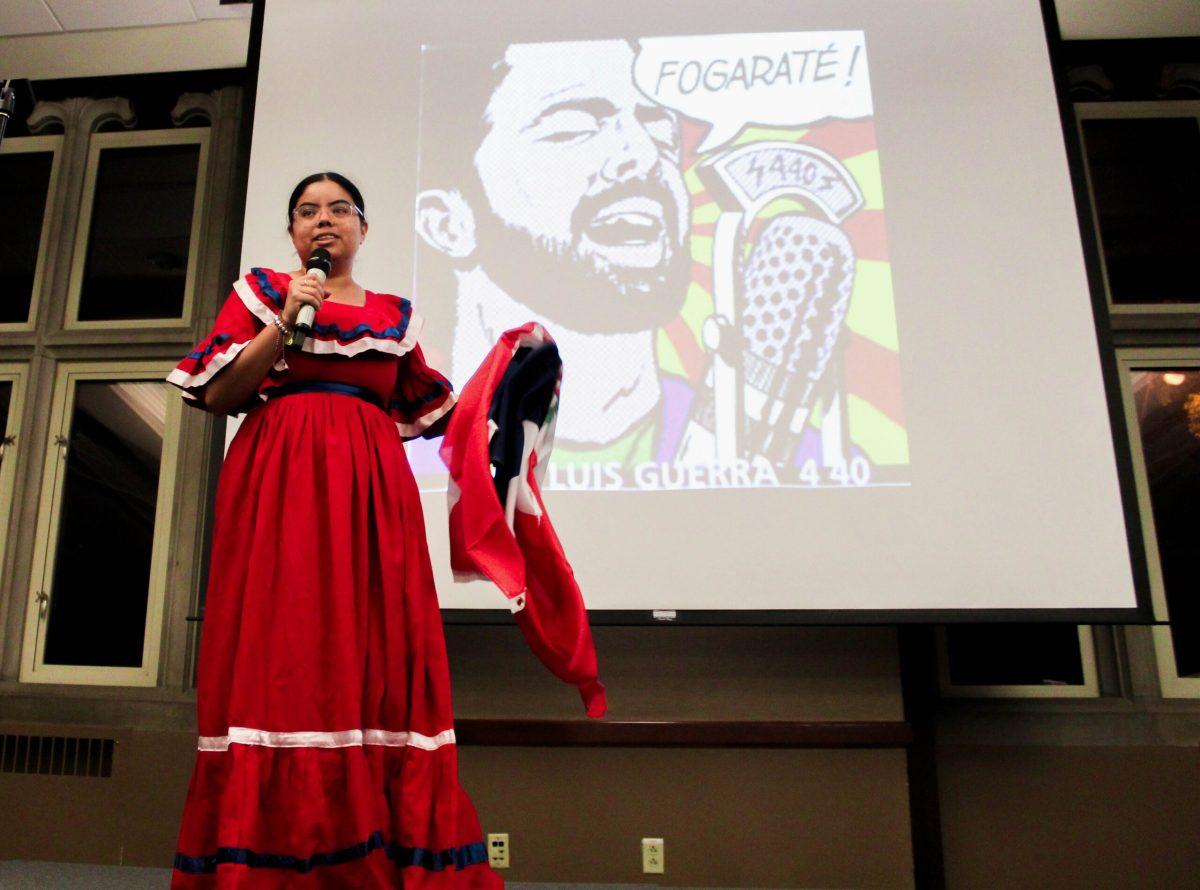Fashion is one of the many elements that set cultures apart from one another. People often find a sense of identity through the styles they wear and the history behind them. The Multicultural Center’s production of Culture Couture showcased these ties.
The event was held from 7 to 8 p.m. Tuesday evening in Stotler Lounge of Memorial Student Union. Officers of the organization, including host Alexis Currie, opened the event with some welcoming remarks.
The evening had an underlying message beyond the elaborate fashions. Currie began by defining the difference between cultural appropriation and appreciation. She asked guests to keep these themes in mind throughout the show and in the coming days, especially as they decide on Halloween costumes.
“With things like Halloween coming up we see a lot of appropriation and not appreciation,” Currie said to the crowd.
With a sense of awareness established, the show began. First, a model displayed a Middle Eastern style of dress that would typically be worn to weddings or other celebrations. She explained the significance behind her long gown and colorful accessories.
Next, the audience was transported to the Caribbean as a model sported a dress bearing the colors of the Dominican Republic, paying tribute to where she’s from. The red, white and blue gown is the typical style worn by women for the nation’s Independence Day celebration.
Two different styles representative of Iran were showcased, highlighting the diversity that can be found among the country’s provinces. The first was a long colorful dress with a patterned scarf covering the ears and shoulders. Later, another long dress worn with a cap, vest and shawl spoke of the culture in the northern part of Iran. Both garments were inspired by trends dating back 4,000 years.
A traditional purple and gold sari was modeled for the crowd by Bini Sebastian, a fourth-year doctoral student in the counseling psychology program. She spoke of the importance of her culture to her as she adjusted to life in Texas as a child.
“Seeing the lack of brown people made me wonder, ‘What does it mean to be Indian?’” Sebastian said onstage. “This [dress] allows me to feel like a freaking goddess. But I don’t want to be fantasized.”
This statement by the last model tied the event back to its main purpose: analyzing cultural appropriation in today’s society. Between each outfit, the audience was asked to decide whether images shown on the screen were appropriation or appreciation. The discussion led to varying points about where to draw the line and those that may be harmed or offended by this act.
“We can’t lose those cultures as we go on,” freshman Sydney Wilson said. “I think there is a lot of history and a lot of stuff we can learn from them.”
All of the models were brought back on-stage for a final round of applause. Members of the Multicultural Center thanked everyone for coming and closed with a reminder to continue thinking about the cultural consequences of their clothing choices.
_Edited by Janae McKenzie | [email protected]_








